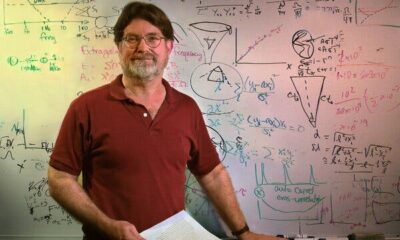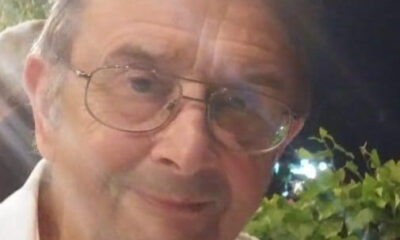Science
Groundbreaking Research Reveals Supermassive Black Holes Smaller Than Expected

Recent research has revealed that supermassive black holes may not be as massive as scientists previously believed. A team from the University of Southampton, in collaboration with European partners, conducted groundbreaking observations of a young galaxy located 12 billion light years away. Utilizing advanced telescope technology, these findings indicate that the supermassive black hole within this distant galaxy is approximately 10 times smaller than earlier estimates.
This revelation addresses a longstanding mystery regarding the rapid growth of supermassive black holes shortly after the Big Bang. Professor Seb Hoenig from the University of Southampton explained, “We have been wondering for years how it’s possible we discovered all these fully grown supermassive black holes in very young galaxies shortly after the Big Bang. They shouldn’t have had the time to grow that massive.”
According to the research published in the journal Astronomy and Astrophysics, the study utilized the advanced Gravity+ instrument at the European Southern Observatory’s Very Large Telescope in Chile. This technology combines light from four powerful optical telescopes. The team, comprising researchers from France, Germany, Portugal, and Belgium, focused on an ancient quasar, described as “a galaxy with a black hole so old and bright it looks like a cosmic beacon from the dawn of time.”
The findings revealed that this quasar possesses a swirling mass of super-hot gas, estimated to be 800 million times the size of our sun, which is set to be consumed by the supermassive black hole. Professor Hoenig elaborated on the dynamics of this process, stating, “Most of the gas falling towards the supermassive black hole is being violently blasted away rather than feeding it. Think of it like a cosmic hairdryer set to maximum power: the intense radiation around it is blowing everything away that approaches it.”
This specific movement of gas is crucial for accurately measuring the mass of the black hole. The research team posits that this “feeding frenzy” creates a powerful expulsion of gas that has likely led previous studies to overestimate the actual size of supermassive black holes.
The implications of this study are significant, as they could prompt a reevaluation of existing models of cosmic evolution. Understanding the true scale of these black holes and their growth patterns is essential for comprehending the formation of galaxies in the early universe. As research continues, these findings may reshape our understanding of the cosmos and the processes that govern its development.
-

 Technology5 months ago
Technology5 months agoDiscover the Top 10 Calorie Counting Apps of 2025
-

 Health2 months ago
Health2 months agoBella Hadid Shares Health Update After Treatment for Lyme Disease
-

 Health3 months ago
Health3 months agoErin Bates Shares Recovery Update Following Sepsis Complications
-

 Technology4 months ago
Technology4 months agoDiscover How to Reverse Image Search Using ChatGPT Effortlessly
-

 Technology1 month ago
Technology1 month agoDiscover 2025’s Top GPUs for Exceptional 4K Gaming Performance
-

 Technology2 months ago
Technology2 months agoElectric Moto Influencer Surronster Arrested in Tijuana
-

 Technology5 months ago
Technology5 months agoMeta Initiates $60B AI Data Center Expansion, Starting in Ohio
-

 Technology5 months ago
Technology5 months agoRecovering a Suspended TikTok Account: A Step-by-Step Guide
-

 Health4 months ago
Health4 months agoTested: Rab Firewall Mountain Jacket Survives Harsh Conditions
-

 Lifestyle5 months ago
Lifestyle5 months agoBelton Family Reunites After Daughter Survives Hill Country Floods
-

 Technology4 months ago
Technology4 months agoHarmonic Launches AI Chatbot App to Transform Mathematical Reasoning
-

 Technology3 months ago
Technology3 months agoUncovering the Top Five Most Challenging Motorcycles to Ride




















